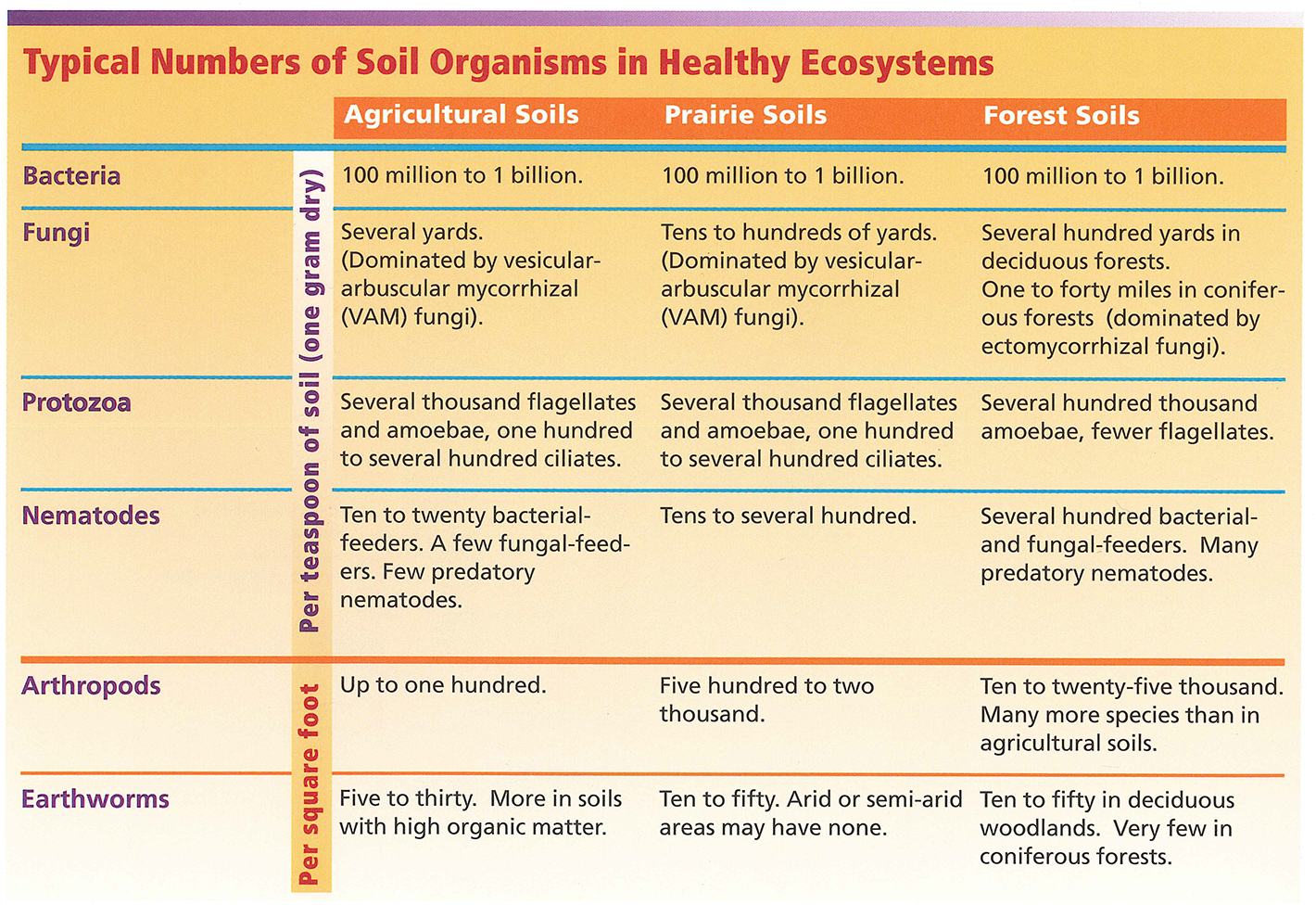Sustainability has become the new trigger point for consumers in the public’s rapidly expanding politically correct mindset. “I prefer to know the farmers that grew my pistachio/walnut truffle gelato and half-caf, decaf, almond mocha Frappuccino were sustainable in their efforts.” The ironic thing is, I haven’t met a farmer that has ever said, “Man, I am trying so hard to use up the last remaining piece of fertility this ground can give me before my kids take it over and spend their inheritance…”
We strive every day to make our farms bigger and better than last year, applying the latest and greatest piece of advice we can get to make that happen. Farmers and ranchers are the original “environmentalists” providing food from the same piece of ground, year after year, to keep us from having to hunt and gather again. In those efforts, most of us are exploring new methods of creating healthy and bountiful soils.
The last decade has seen a solid rise in the world of biologically active soil inoculants as we strive to keep our ground as sustainable as possible. Research shows a diverse biological soil population will give rise to bigger yields and better quality. We are realizing the symbiotic relationship bacteria, yeasts, fungi, protozoa, actinomycetes and macro biota have on providing usable sources of nutrition and plant health.
Ask yourself, “Is it really a stretch to think our trees are healthier with better biology in the soil?” Antibiotics came from yeast fermentations in the first place. In a piece as far back as 1998 by Gregory Stephanopoulos and Jens Nielsen in “Metabolic Engineering” Examples of Pathway Manipulations:
Metabolic Engineering in Practice
“Antibiotic production by microorganisms is one of their more interesting features, particularly from a medical and commercial point of view. More than 10,000 antibiotics and similar bioactive metabolites have been isolated from microbes, with approximately 500 new classes of low-molecular-weight compounds published every year…The primary classes are cephalosporins, penicillins, and tetracyclines, and the majority of these agents are produced by Streptomyces (and other actinomycetes) and various Bacillus species. Their primary use is in the treatment of human infectious diseases, although a significant number have agricultural and veterinary applications.”
At my company, we have been using bacillus, actinomycetes, fungal and yeast strains for over 30 years. What used to be called snake oil is now in the mainstream. A new, diverse group of companies use soil inoculants, stimulants and “microbe food” to ensure the good bugs overpower the bad bugs. But here’s the interesting news: the trees beat us to the punch. Root exudates produced by the trees are doing the exact same thing.
Complementing Nature’s Processes
Sugars, complex carbohydrates, starches and acids all play a major role in trees giving up food and creating a healthy environment for the biology that in turn is converting nutrition to usable forms. The secondary effect is that the biology is also creating defenses against pathogens. The question is, “Can we speed that up?” I say yes. Most of my growers spread a good amount of compost on their soil every year. We are simply trying to add organic matter. However, the biology that composted that material in the first place is still there and has a new medium in which to thrive the soil.
Ground that has had previous cover crops on it now have new friends digesting sequestered nitrogen, breaking down lignin, cellulose and transforming calcareous phosphorus from a rock form into usable nutrients. As they thrive and subsequently die, they can release beneficial compounds for other biology and our roots. Many companies are now propagating their own strains of biology and adding it as liquid amendments to irrigation water, seeds and fertilizers. There are also many companies attempting to populate soils with mycorrhizal strains to increase the size of the root’s “net” or surface area to increase assimilation. Bacillus thuringiensis is being shown to help kill nematodes and eat their eggs. Actinomycetes that produce antibiotics can potentially treat some pathogenic issues while other forms of biology may create what is called induced systemic resistance: triggering a plant to create its own defenses against diseases.
Think of it this way. Many healthy adults take probiotics daily to help promote an active and healthy gut. Studies show more is done with the 5 pounds of biology we have in our guts to assimilate nutrition than the organs themselves. The soil does the same thing. It needs biology to make its fertility usable. Just providing the plants food doesn’t mean they have the ability to assimilate it.
Evaluating Products
Now comes the blink and uncomfortably long stare I usually get from my growers. This pause is followed by, “What do I do with that information?” I answer this with the resounding, “All of it!… with a few caveats.” Ask questions. Who made it? Can I mix it with fertilizer? Can it store? Will heat destroy it? (A big deal in Calif. and the sunbelt.) Is it native to my soil? And most importantly, can we test it once it’s applied?
I tell my growers to apply compost and mulches. I recommend they plant cover crops, monitor the soil moisture, add organic acids, even specific sugars and then test the soil. A solid, active soil biology should produce a larger volume of carbon dioxide when incubated than a less active soil. It’ll even release more usable and stable nitrogen, phosphorus, potassium, calcium, micronutrients, etc.
Your soil isn’t going anywhere. Neither are the roots that are stuck in it. Create as healthy an environment as possible for them by giving them more friends to play with. That’ll sustain higher yields and keep quality to a premium, triggering more happy customers.
















